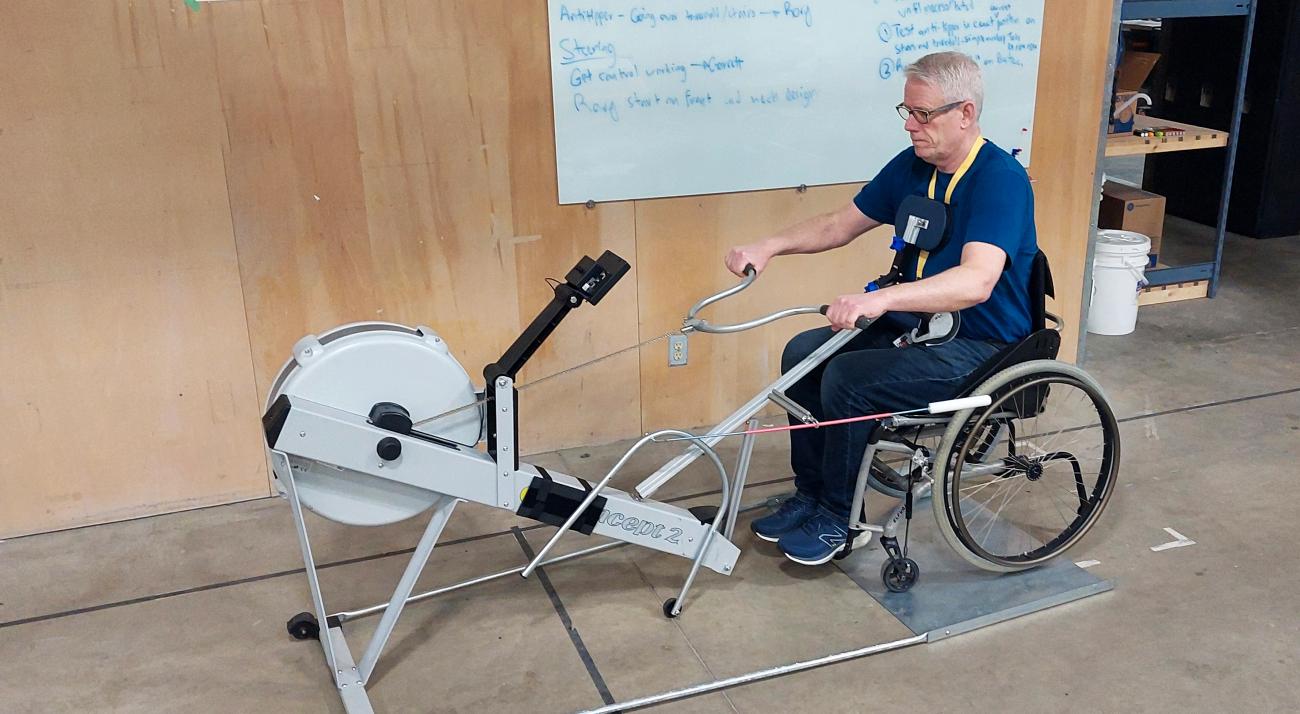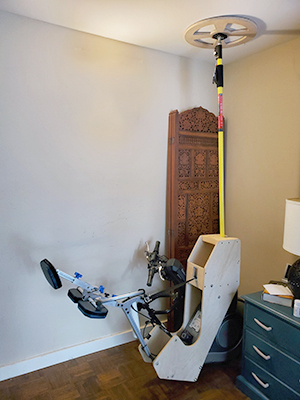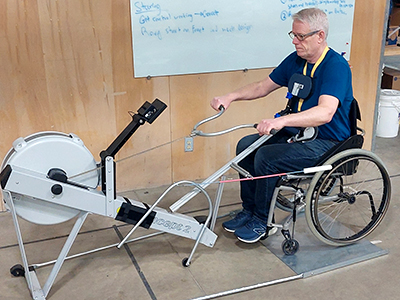
The home- and gym-aROW machines offer a heart-pounding workout and improved access to wheelchair-adapted physical exercise.
Exercises that counterbalance overworked muscles used to propel manual wheelchairs can help people with spinal cord injury (SCI) in attaining cardiovascular fitness targets while protecting against aches and strains. New home-based and established gym-based adaptive rowing equipment investigated by Vancouver Coastal Health Research Institute researcher Dr. Ben Mortenson enabled participants to achieve these objectives safely and effectively.
“People with SCI are at greater risk of health complications due to cardiovascular problems,” notes Mortenson. “Yet, they are less likely than the general population to engage in cardiovascular exercise because of barriers, including inaccessible recreation facilities and physical limitations that can impede heart rate elevation.”

Heart disease is a leading cause of death among people with SCI, who are over four times more likely to develop the condition than able-bodied individuals. This is due in part to people with SCI having elevated cardiovascular disease risk factors, including diabetes, metabolic changes and cholesterol buildup.
“Guidelines recommend that people with SCI engage in at least 20 minutes of moderate to vigorous aerobic exercise twice per week.”
Exercise can protect against cardiovascular disease by keeping the heart strong, controlling blood pressure and reducing levels of harmful cholesterol in the blood. It also triggers the release of chemicals in the brain that boost mood.
aROW offers a better workout than other cardio machines
Participants in Mortenson’s exploratory study used both gym-aROW machines and modified home-aROW machines for one month each. Both pieces of equipment were developed by the BCIT Rehabilitation Engineering Design Lab, of which Mortenson is associated.
“Participants appreciated that they were able to achieve good exercise intensity and positive physical outcomes with both the home- and gym-aROWs.”
The aROW machine is a piece of exercise equipment used to target larger muscles in the back in an ergonomic manner that can facilitate extended, high-intensity cardiovascular exercise. Users wheel up to the machine, adjusting the equipment to meet their individual needs and preferences.

“It’s a lot more convenient having it sitting there,” Alex, a 57-year-old study participant living with paraplegia, shared with the research team regarding the home-aROW. “You wheel by it two or three times per day. That was part of the motivation to use it. You use it for 20 minutes and you feel pretty good.”

Community gym environments offered participants opportunities for socialization. However, travel to gyms was a barrier for some.
“I think it’s better for me to go out and workout. It gives me the oomph to work out more.” — Parker, a 53-year-old study participant with tetraplegia
Participants experienced good exercise quality and intensity both with the home- and gym-aROWs, reaching a more elevated heart rate than they had with other exercise machines. The aROW’s resistance workout also balanced out the anterior pushing muscles participants use when self-propelling a wheelchair.
“Wheeling is not ergonomic, making it really hard on the arms of people with SCI,” says Mortenson. “There is a high prevalence of shoulder dysfunction in wheelchair users due to overuse, repetitive movements and weight bearing through the shoulder. Rowing strengthens the scapular retractors, improving scapular stability and reducing the risk of shoulder injury.”
Watch this video of the aROW and a similar device called the aSKI in use:
Apart from a great workout, participants noted that using the aROW also translated into positive outcomes in their everyday life.
“We live in a relatively flat area, but it’s slightly inclined to get up and over to a trail, and I would struggle,” shared Parker. “With the aROW workouts, it got easier. I could give it that extra push.”
Visit the BCIT website for more information about the aROW and its cousin product the aSK.


